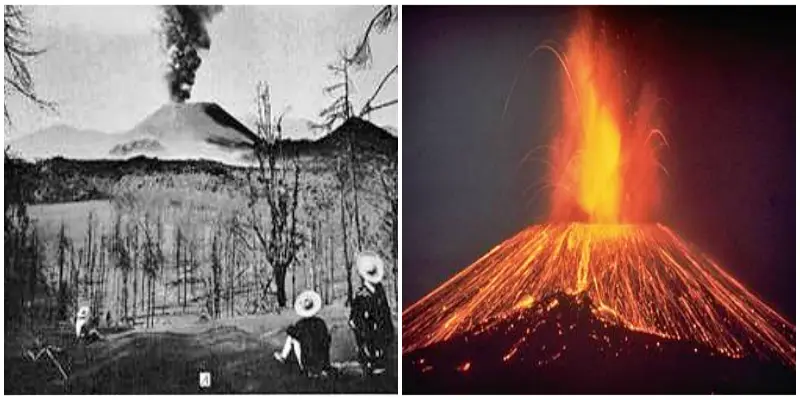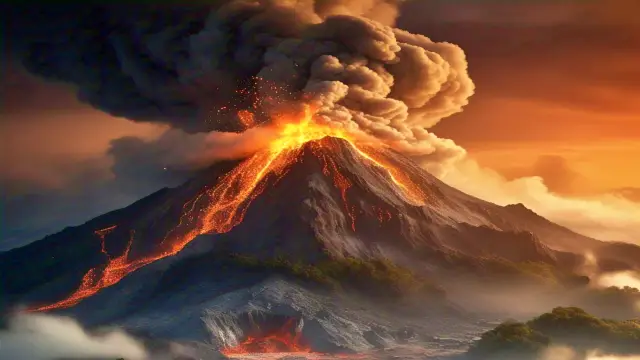Mount Paricutin is one of Mother Nature’s most incredible wonders. Known as the youngest volcano in the Western Hemisphere, it famously grew out of a Mexican cornfield. Its dramatic birth and growth have earned it a spot among the 7 Wonders of the World. This article dives into the fascinating story of Mount Paricutin, its impact, and why it continues to captivate scientists and travelers alike.
The Birth of a Volcano: A Farmer’s Unbelievable Discovery
The story of Mount Paricutin begins in 1943 in the small Mexican village of Paricutin. Farmers in the region were accustomed to the occasional tremors, as the area sits on an active tectonic zone. However, nothing could have prepared them for what happened on February 20, 1943.
Farmer Dionisio Pulido was working in his cornfield when he felt the ground shake violently. Moments later, the earth cracked open, releasing a deafening roar and a foul smell of burning sulfur. Dionisio and his wife became the first humans to witness the birth of a volcano.
Within hours, the fissure began spewing ash and lava, marking the start of a nine-year eruption that would change the landscape forever.
The Rapid Growth of Mount Paricutin
Mount Paricutin’s growth was astonishing. Within a week, it reached the height of a five-story building. By the end of its first year, it had grown to 1,102 feet. The volcano continued to erupt until 1952, reaching a final height of 1,345 feet.
During its active years, Mount Paricutin:
- Covered 25 square kilometers in lava and ash.
- Displaced thousands of people from nearby villages.
- Sent ash as far as Mexico City, over 200 miles away.
The most destructive eruption occurred in 1943, when lava flows rose to within 50 feet of the crater’s rim, devastating the surrounding area and claiming over 1,000 lives.

Why Mount Paricutin is Unique
Mount Paricutin holds several distinctions that make it a geological marvel:
- Youngest Volcano in the Western Hemisphere: Its birth in 1943 makes it the only volcano whose entire life cycle has been observed by humans.
- Monogenetic Volcano: It erupted only once and will never erupt again.
- 7 Wonders of the World: Its dramatic formation earned it a place among the world’s most extraordinary natural phenomena.
The Impact on Local Communities
The eruption of Mount Paricutin had a profound impact on the local population. Villages like Paricutin and San Juan Parangaricutiro were buried under lava and ash. The church tower of San Juan is one of the few structures still visible, standing as a haunting reminder of the volcano’s power.
Despite the destruction, the eruption provided scientists with invaluable insights into volcanic activity. Mount Paricutin became a living laboratory, helping researchers understand how volcanoes form and evolve.
Visiting Mount Paricutin Today
Today, Mount Paricutin is a popular destination for adventurers and geology enthusiasts. Visitors can hike to the summit and explore the surrounding lava fields. The site offers a unique opportunity to witness the raw power of nature and learn about the volcano’s incredible history.
Key Facts for Travelers:
- Location: Michoacán, Mexico
- Best Time to Visit: Dry season (November to April)
- Hiking Difficulty: Moderate to challenging
Conclusion
Mount Paricutin is more than just a volcano; it’s a symbol of nature’s unpredictability and resilience. From its humble beginnings in a cornfield to its status as one of the 7 Wonders of the World, it continues to inspire awe and curiosity.
Whether you’re a science enthusiast, a history buff, or an adventure seeker, Mount Paricutin is a destination that should be on your bucket list. Its story reminds us of the incredible forces that shape our planet and the enduring spirit of the communities that live in their shadow.

